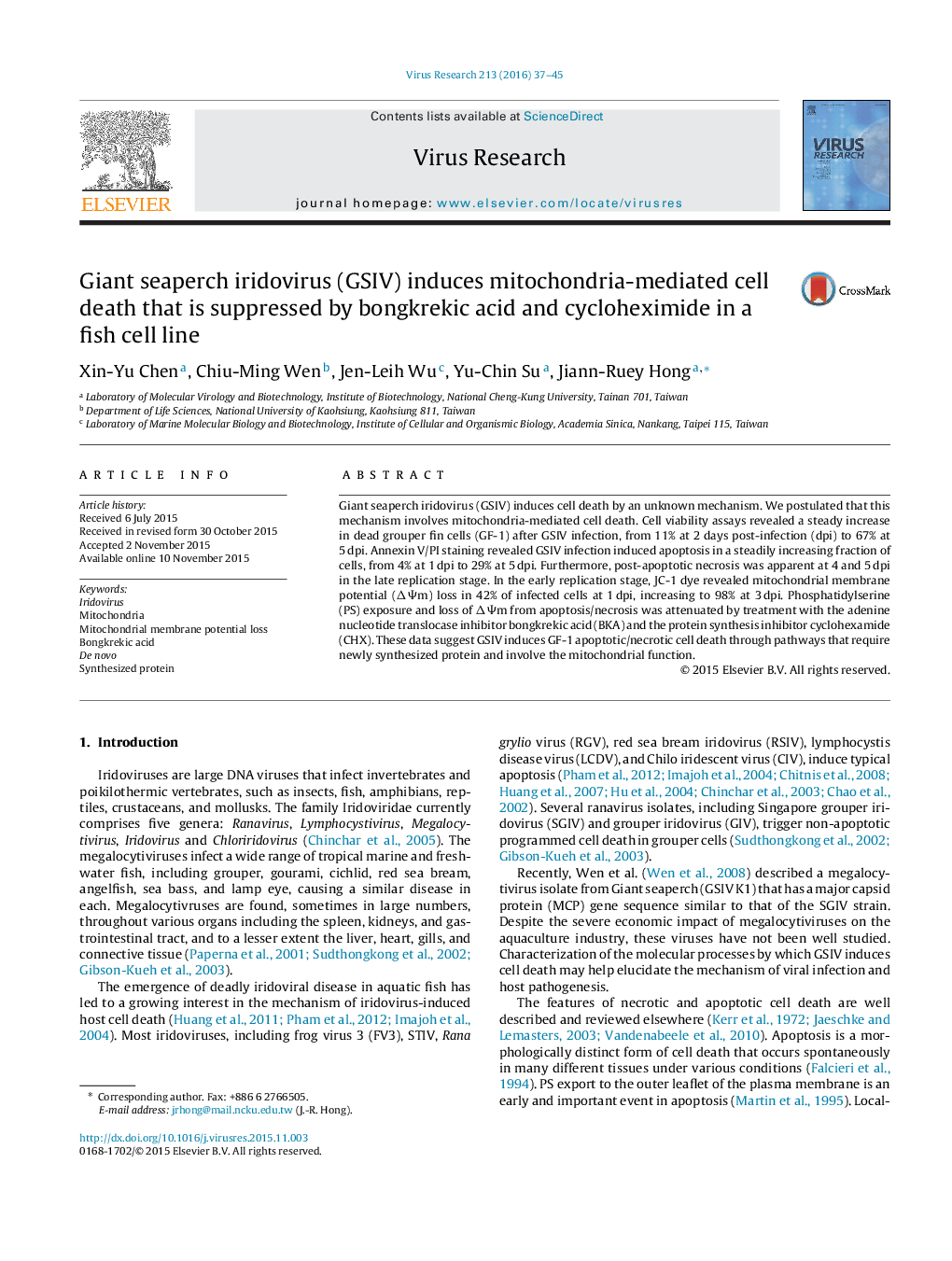| Article ID | Journal | Published Year | Pages | File Type |
|---|---|---|---|---|
| 3427893 | Virus Research | 2016 | 9 Pages |
•Giant seaperch iridovirus (GSIV) induces cell death by an unknown mechanism.•We found that GSIV can induce mitochondria-mediated cell death.•The loss of mitochondrial membrane potential (ΔΨm) from apoptotic/necrosis was attenuated by treatment with the adenine nucleotide translocase inhibitor bongkrekic acid (BKA).•GSIV-induced mitochondria-mediated cell death was blocked by the protein synthesis inhibitor cyclohexamide (CHX).
Giant seaperch iridovirus (GSIV) induces cell death by an unknown mechanism. We postulated that this mechanism involves mitochondria-mediated cell death. Cell viability assays revealed a steady increase in dead grouper fin cells (GF-1) after GSIV infection, from 11% at 2 days post-infection (dpi) to 67% at 5 dpi. Annexin V/PI staining revealed GSIV infection induced apoptosis in a steadily increasing fraction of cells, from 4% at 1 dpi to 29% at 5 dpi. Furthermore, post-apoptotic necrosis was apparent at 4 and 5 dpi in the late replication stage. In the early replication stage, JC-1 dye revealed mitochondrial membrane potential (ΔΨm) loss in 42% of infected cells at 1 dpi, increasing to 98% at 3 dpi. Phosphatidylserine (PS) exposure and loss of ΔΨm from apoptosis/necrosis was attenuated by treatment with the adenine nucleotide translocase inhibitor bongkrekic acid (BKA) and the protein synthesis inhibitor cyclohexamide (CHX). These data suggest GSIV induces GF-1 apoptotic/necrotic cell death through pathways that require newly synthesized protein and involve the mitochondrial function.
